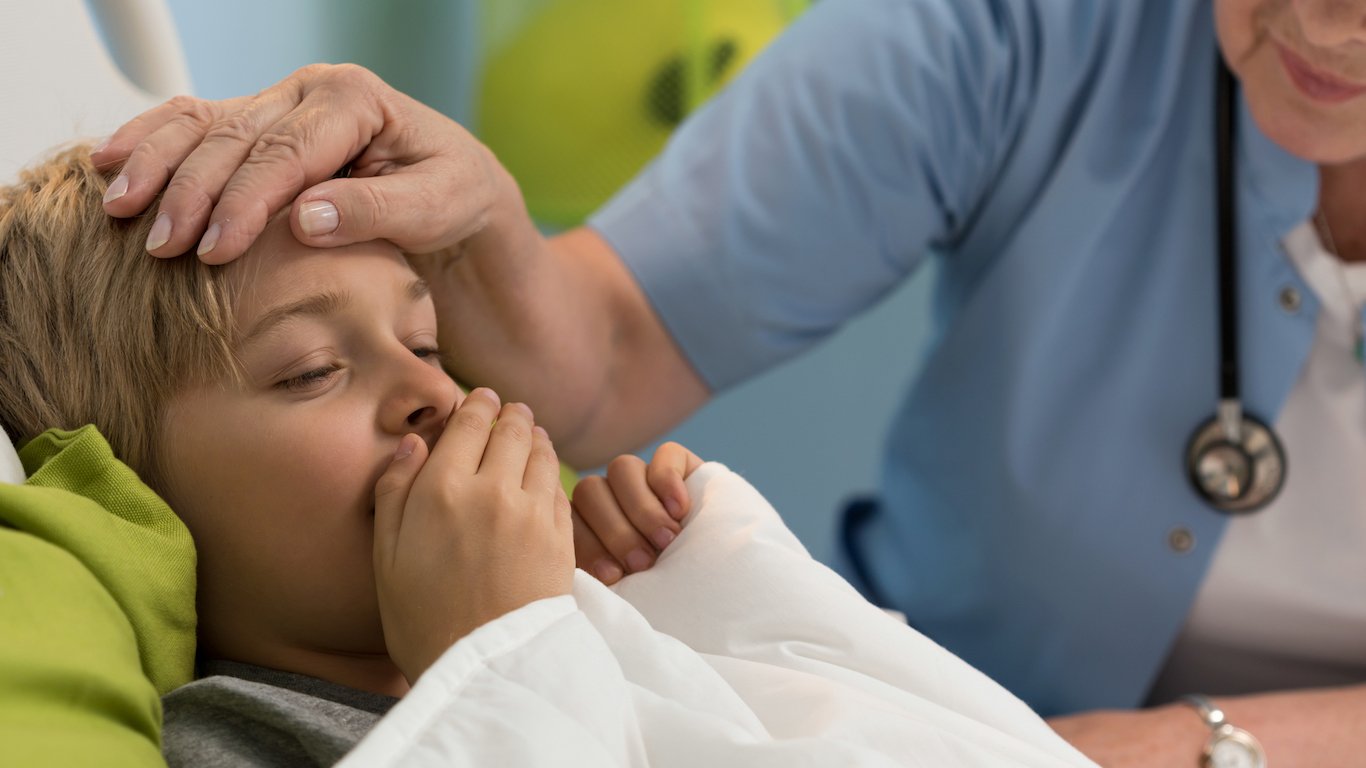Health and Healthcare
The One Almost Sure Sign You Have Measles

Published:
Last Updated:

The 2019 measles outbreak is the worst in years. From the start of the year until April 26, which is the most recent data available, the number of measles cases has hit 704 in 22 states. The Centers for Disease Control and Prevention (CDC) reports that is the highest figure since 1994. While measles has a number of telling symptoms, many are common with other infections. One, however, is a telltale sign that someone has the disease.
Measles was “declared eliminated” in 2000, according to the CDC. However, it has come raging back this year. The disease is so serious that it is listed among the diseases that doctors are most afraid of.
People get symptoms a week or two after they are infected. These symptoms include fever; runny nose, also known as coryza; red, runny eyes, also known as conjunctivitis; and a cough. Most of these are common symptoms with people who have colds and certain types of flu, which comes with its own dangerous and surprising complications.
However, people who suffer from measles usually get so-called Koplik spots, which appear early in the symptom cycle. These are white spots that appear in the mouth.
The Mayo Clinic describes Koplik spots as “Tiny white spots with bluish-white centers on a red background found inside the mouth on the inner lining of the cheek.” They appear two or three days before people break out in a rash. Medical experts say that Koplik spots are actually a way to contain measles outbreaks because they appear days before a much more noticeable rash. People with the spots can be taken out of the general population, which makes them much less likely to infect others.
The use of Koplik spots as a way to make a measles diagnosis goes back decades. Dr. Henry Koplik, an American pediatrician, identified them in 1896.
As measles spreads fast, diagnosis becomes more essential. The current problem has worsened because infected people have come to the United States from Israel, Ukraine, the Philippines and other nations where outbreaks are more severe. Some airline flights have even been delayed on worries a passenger might have the disease.
Koplik’s work may be essential to containing the viral infection, which almost certainly will spread in the country, even though the United States is one of the countries that spend the most on public health.
Thank you for reading! Have some feedback for us?
Contact the 24/7 Wall St. editorial team.